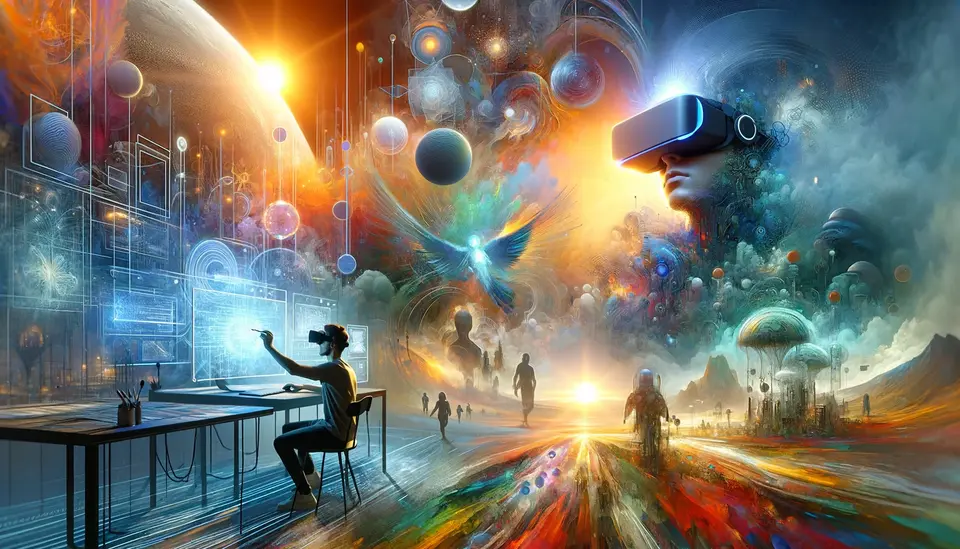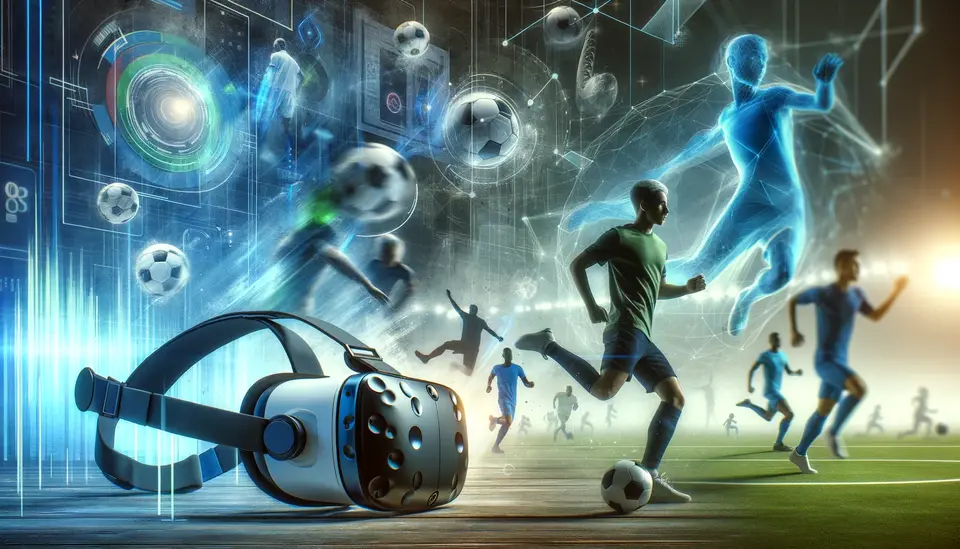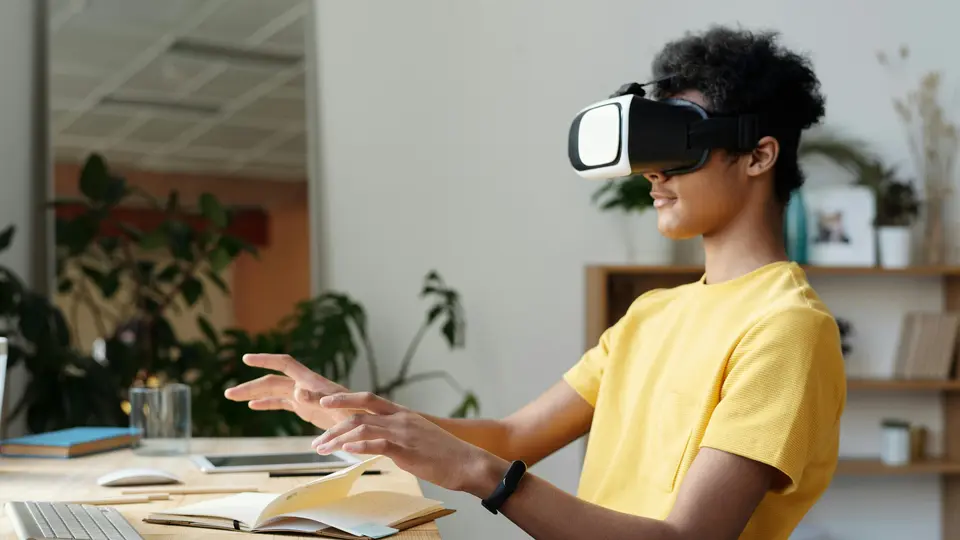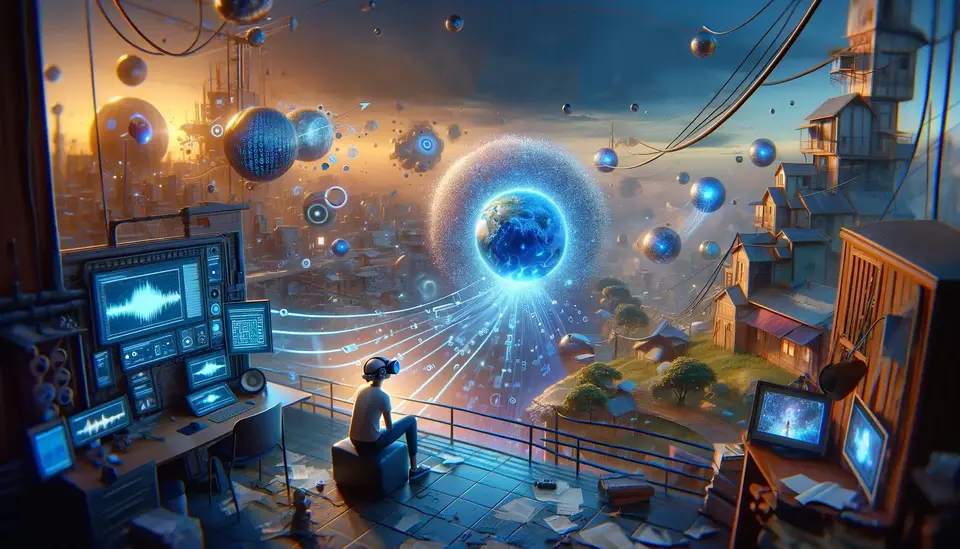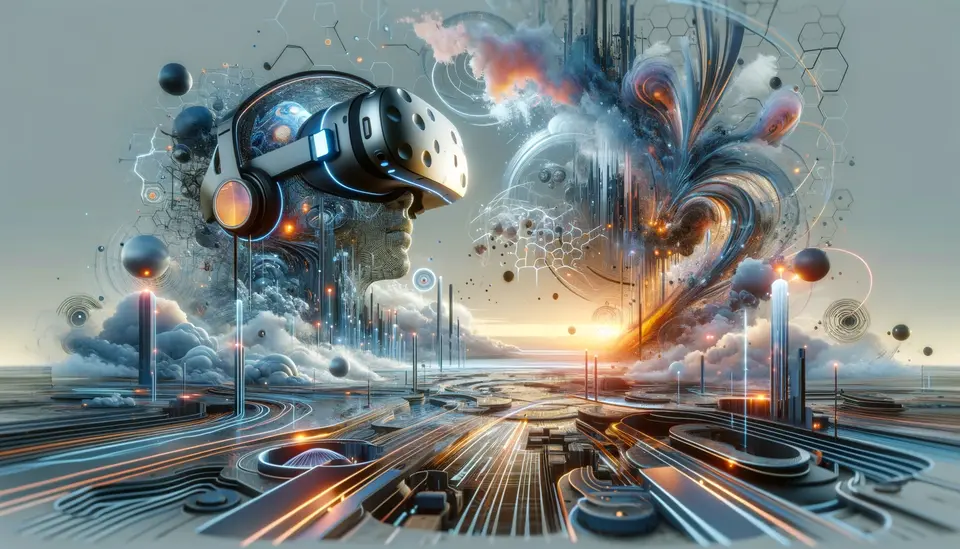The Future of Digital Art in Virtual Reality (VR) Through Sora
Posted on April 6, 2024 8 minutes 1598 words
Table of contents
Introduction
The unveiling of Sora by OpenAI has ushered in a new era for the creative world. With its unparalleled ability to generate realistic and imaginative scenes from simple text instructions, Sora is not just another tool in the artist’s palette but a groundbreaking leap forward in creative technology. Meanwhile, the realm of Virtual Reality (VR) has been transforming the way we perceive, interact with, and create digital art. The seamless immersion and interactive experiences offered by VR have opened up new vistas for artistic expression and exploration. At the intersection of these two technological marvels lies a fertile ground for innovation. This post seeks to delve into how Sora, with its advanced AI capabilities, is set to redefine the landscape of digital art within the immersive environments of VR.
Understanding Sora
Sora represents a pinnacle of AI-driven creativity, capable of transforming textual prompts into dynamic, high-fidelity videos. According to OpenAI’s comprehensive documentation, this AI model excels in creating detailed scenes that blend the real with the surreal, demonstrating an intricate understanding of the physical world and its motion. Behind Sora’s magic is a sophisticated combination of diffusion models and transformer architecture, allowing it to generate videos up to a minute long that maintain visual coherence and adhere closely to user prompts. This deep comprehension enables Sora to simulate complex interactions within generated scenes, showcasing its potential not just as a tool for creating standalone pieces of art but as a foundational technology that can simulate realistic environments and narratives. The significance of Sora’s capabilities lies in its ability to bridge the gap between imagination and reality, offering creatives a new medium to explore ideas that were once confined to the limits of their imagination or the constraints of physical and budgetary realities.
The Evolution of Digital Art with VR
The journey of digital art has been one of constant evolution, shaped by technological advancements and the shifting boundaries of artistic imagination. From the early days of pixel art to the sophisticated 3D models and environments of today, digital art has continually embraced new tools and mediums. Virtual Reality has emerged as a pivotal technology in this evolution, transforming the canvas of digital art into immersive worlds that engage all the senses. The current state of VR in digital art is characterized by its use in creating interactive installations, simulations, and experiences that defy the constraints of physical spaces and traditional art forms. The integration of Sora into VR represents a game-changer for digital art creation. By combining Sora’s AI-driven video generation with VR’s immersive capabilities, artists and creators are poised to explore new dimensions of creativity. This fusion promises to unlock unprecedented possibilities for storytelling, environmental design, and interactive art, paving the way for a future where the boundaries between the artist, the artwork, and the audience become increasingly blurred.
Sora’s Impact on Creativity and Artistic Expression
Sora’s introduction has sparked a flurry of creative experimentation, as showcased in “Sora: first impressions.” Visionaries like Paul Trillo and the multimedia group shy kids have pushed the boundaries of what’s possible, leveraging Sora to bring their most imaginative concepts to life. Trillo, known for his boundary-pushing films, found in Sora a tool that removed the traditional constraints of filmmaking, allowing for a level of ideation and experimentation previously unattainable. Similarly, shy kids used Sora to realize their short film “Air Head,” creating surreal visuals that transformed their storytelling, proving Sora’s capability to render the surreal as convincingly as the real.
This blend of realism and surrealism opens up new avenues for artistic expression. Artists are no longer limited by the physical world’s constraints, enabling a fusion of reality and imagination that was once difficult or impossible to achieve. The implications for VR environments are profound. Sora enables the creation of immersive experiences that can oscillate between hyper-realistic simulations and abstract, dream-like realms, offering viewers new ways to experience art and narrative.
Technical Innovations and Challenges
Delving into the technical core, Sora is anchored by a diffusion model and transformer architecture, allowing it to interpret and generate complex scenes with an understanding of motion and emotion. This technical foundation enables Sora to create detailed, dynamic scenes from textual prompts, a significant advancement in AI-driven content creation. However, the model isn’t without its challenges. Accurately simulating the physics of complex scenes and understanding cause-and-effect relationships in these simulations remain areas for improvement. Overcoming these obstacles is crucial for further enhancing the realism and believability of Sora-generated content.
Additionally, as Sora paves new paths in digital art creation, ethical considerations come to the fore. Ensuring the technology is used responsibly, preventing misuse, and addressing potential biases are paramount. OpenAI has initiated safety measures, including adversarial testing and content detection tools, to mitigate risks associated with misleading content and uphold ethical standards in digital art generation.
The Creative Process Reimagined
Sora offers a transformative shift in the creative workflow for artists and designers. Its ability to rapidly prototype ideas from textual prompts changes how creatives approach the ideation and realization phases of their projects. This shift is not just about efficiency but also about the depth of creativity and exploration. Artists can iterate on concepts with unprecedented speed, allowing for a more dynamic creative process that encourages experimentation and risk-taking.
The collaboration between AI and artists, facilitated by Sora, introduces new models of creativity where human intuition and machine capabilities complement each other. This symbiosis can lead to the emergence of previously unimaginable art forms and narratives. A compelling case example is a recent project that combines Sora and VR to create an interactive digital art installation. In this project, viewers step into a VR environment where they interact with and influence a continuously evolving narrative landscape generated in real-time by Sora, based on the collective input of the audience. This groundbreaking piece not only redefines the role of the audience in the art-making process but also exemplifies the vast potential of merging AI with VR to create immersive, interactive art.
Through these advancements and explorations, Sora is not just enhancing the digital art landscape but also inviting us to reconsider the essence of creativity and collaboration in the age of AI.
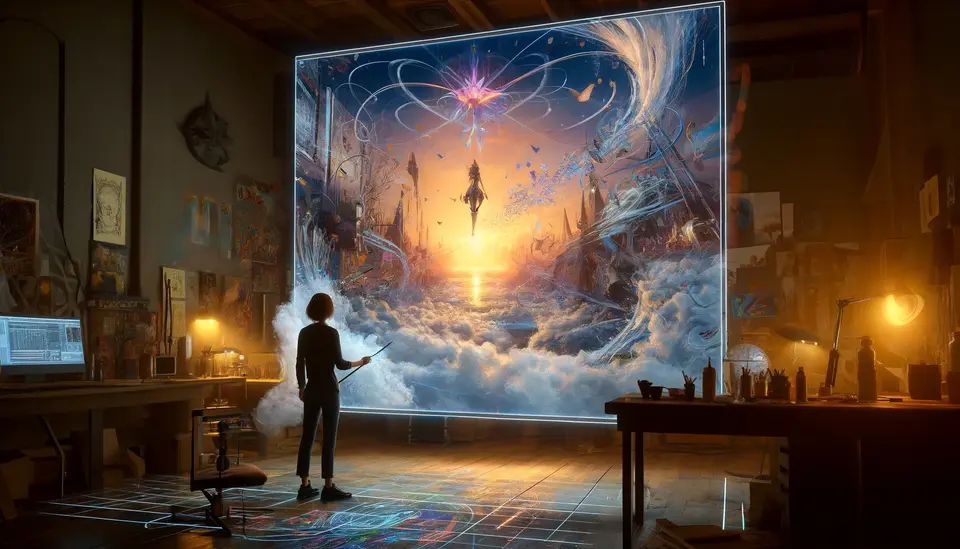
Looking Ahead: The Future of VR and Digital Art with Sora
As we venture further into the future, the intersection of Sora, VR, and digital art is poised to unlock new realms of creativity and expression. Emerging trends suggest a move towards more immersive, interactive, and personalized art experiences. Viewers might not just witness art but live within it, influencing and altering its course in real-time through VR environments powered by Sora. Predictions for this dynamic trio focus on creating spaces where art is not a static entity but a living, breathing world that reflects the complexity and vibrancy of human emotion and creativity.
The democratization of digital art creation stands as one of Sora’s most promising potentials. By simplifying the process of bringing complex visions to life, Sora could level the playing field, allowing artists with varied technical backgrounds to manifest their ideas with fidelity and scale previously reserved for those with significant resources. This shift could spark a renaissance of creativity, where diversity of thought and expression is not hindered by technical barriers.
However, this bright future comes with its set of challenges. Ethical considerations, the digital divide, and the need for inclusive platforms that respect and nurture diversity are crucial. As Sora and VR technology evolve, ensuring these tools are accessible and beneficial to all, respecting copyright and ethical use, and fostering a community that values creativity and innovation over exploitation will be vital. The journey ahead is filled with both opportunities for groundbreaking art and the responsibility to navigate this new landscape thoughtfully.
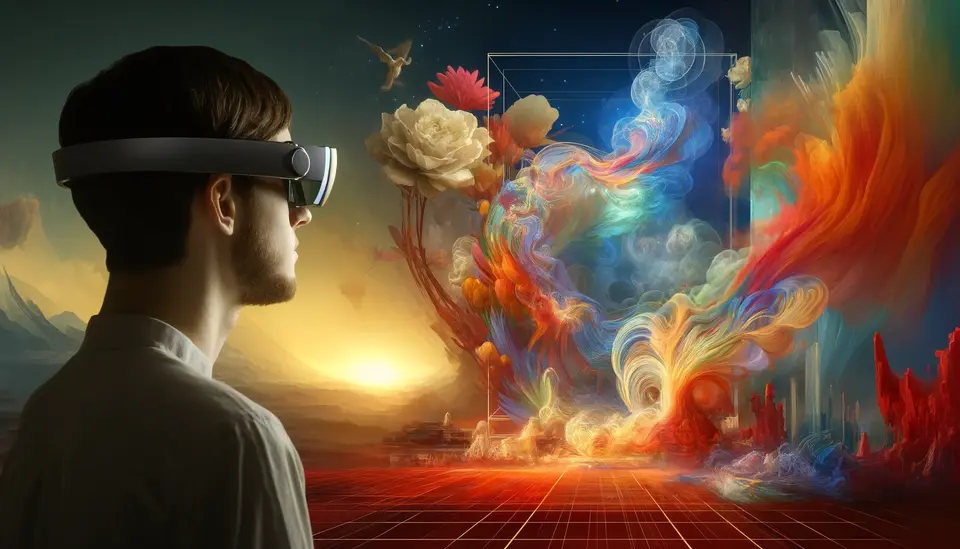
Conclusion
Sora, in concert with VR, is revolutionizing the way we create, experience, and interact with digital art. This evolution extends beyond just new tools for creation; it heralds a new era where the boundaries between creator, viewer, and medium blur into immersive experiences that challenge our perceptions of reality and art. Sora’s role in this transformation is pivotal, offering both the canvas and the brush for artists to dream up worlds that were once confined to the imagination.
The impact of these technologies on the art world and creative industries is profound, promising to enrich the cultural landscape with diverse, dynamic, and deeply personal works of art. This revolution is not just about the art produced but also about who gets to participate in the creation process. By empowering a broader spectrum of voices to contribute their visions, we stand on the cusp of a more inclusive and vibrant artistic future.
Embracing technology for artistic innovation requires an open mind and a bold heart. As we move forward, the synergy between Sora, VR, and the creative spirit offers a beacon of potential. The journey ahead is as much about creating new art as it is about redefining the role of art in society and our lives. In this brave new world, art becomes a shared adventure, a collective dream realized in the limitless realms of virtual spaces, powered by the imagination and Sora’s transformative capabilities.

